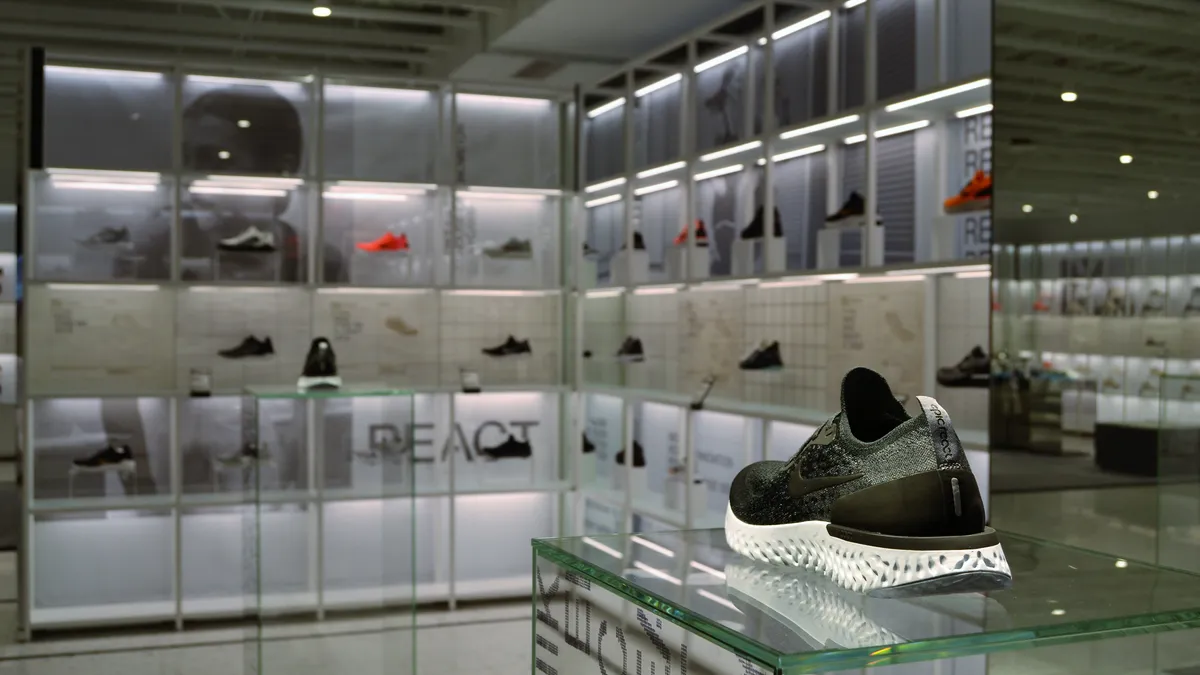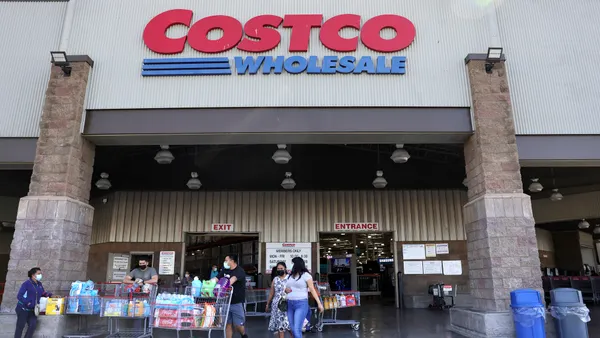Dive Brief:
-
Nike's revenue bounced back significantly from its last quarter, coming in at $10.6 billion for Q1, up from $6.3 billion in Q4. That's down just 1% from Q1 of last year on a reported basis, and flat on a constant currency basis. Net income grew by 11% to $1.5 billion.
-
By brand, Nike brought in $10 billion (flat year over year) and Converse grew 2% to $563 million. Nike Direct sales grew 12% to $3.7 billion, while Nike brand digital sales increased 82%, while wholesale and Nike's physical stores remained lower than usual.
-
Executives remain focused on Nike's Consumer Direct Acceleration strategy, which the retailer said in June would lead to layoffs. In August, the retailer pegged it at "at least" 500 layoffs at the company's Oregon headquarters.
Dive Insight:
With revenue already recovering to flat year over year (and growing in some regions), Nike executives had nothing but confidence in discussing Nike's future.
"No company is better positioned to emerge from this period than Nike," CEO John Donahoe said on a conference call with analysts. Donahoe noted multiple times that Nike is on the offensive, looking to extend its leadership position and increase its market share as most of retail is still picking up the pieces from the battering ram COVID-19 took to sales.
Mostly, that means continuing on the acceleration of its one-Nike marketplace, announced last quarter, which prioritizes Nike digital, Nike owned stores and a select number of partners. From the time the plan was announced in June to now, the company reportedly already shut down nine wholesale accounts.
At the same time, the retailer has doubled down on digital as executives expressed increasing confidence that the shift in consumer behavior toward digital was here to stay. Digital drove close to $900 million of incremental revenue compared to last year and is already meeting the retailer's mix goal of 30%, originally expected to be hit three years from now.
The retailer opened more of its digitally enabled store concepts in the quarter, including a House of Innovation in Paris and a Nike Factory Store in Los Angeles, and is focused on making Nike membership a differentiator through those in-store experiences and in other areas of the business.
To that end, Nike active members increased nearly 60% in the quarter, and the retailer also saw 50% of members start a workout through the training app in Q1, while recording 200% growth in demand for the retailer's commerce app.
Physical retail traffic was still down, though, and the retailer is still tackling excess inventory. In the quarter, inventory increased 15% from the prior year, but was down 9% from the last quarter. That also impacted gross margin, which declined 90 basis points to 44.8% mostly due to higher promotions and supply chain costs.
Overall, though, the company posted results that have been out of reach for many.
"Nike is just scratching the surface of what's possible," Donahoe said on the call. "With our breadth and depth, no one has the advantage in this space that Nike has to connect with consumers. Nike's digital transformation strategy is not easily replicated. Simply put: Scale matters. And Nike leads and will continue to lead in this space for all of the reasons I already mentioned."















